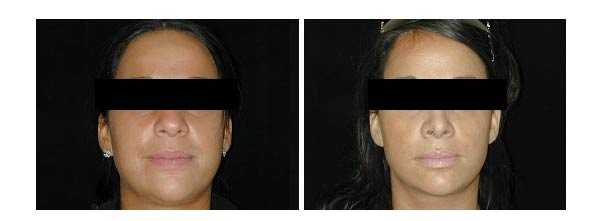What is Rhinoplasty (Nose Job)?
Rhinoplasty surgery, also referred to as a “nose job” by patients, is performed to reshape your nose. It is commonly performed to reduce large noses that are out of proportion to the rest of the face but it can also performed on smaller noses that require augmentation to different portions such as a low nasal bridge and possible droopy, hanging nasal tip or correction of crooked noses.
Who is a candidate?
Cosmetic rhinoplasty is performed typically when the patient is approximately sixteen years old or older.
Rhinoplasty is sometimes performed in conjunction with other procedures such as chin augmentation that yields improved proportional facial aesthetics.
Sometimes certain breathing problems related to the internal nasal structures can be corrected at the same time as nose reshaping is performed. Dr. Mezrow will help you determine whether these structures should be modified along with reshaping your nose.
Consulting with Dr. Mezrow:
During the consultation, Dr. Mezrow will ask you about your particular concerns regarding your face and nose. This will help determine your expectations and determine whether they can be realistically achieved. Because of individual factors, (skin quality, cartilage, bony structures, aging, etc.), not everyone will achieve the same results from rhinoplasty surgery. With you, Dr. Mezrow will select the surgical technique that he feels will obtain the best outcome for you.
After obtaining a comprehensive medical and surgical history, Dr. Mezrow will examine your face and nose, assessing nose size, shape and its individual components. Nasal skin thickness, nose height, width and length, nasal tip and nostrils will be assessed. An internal nasal exam will be performed to assess the airway and components that can cause deviation. The chin will also be examined to assess normal facial proportions.
The procedure is usually performed in an ambulatory surgery center. The procedure typically takes approximately 2-3 hours to perform. Most patients recover within 1 to 2 hours after surgery and are discharged home.
How is the procedure done/Where will I have scars?
Although there are many techniques in rhinoplasty surgery, generally the procedure is performed as referred to as open or closed approach. Both approaches involve intranasal incisions. The difference being that the open approach there is a small incision across the narrowest portion of the skin between your nostrils (columella). Dr. Mezrow will discuss with you which approach he prefers for your surgery
Alterations may be made to increase or decrease the nasal bridge, reduce the size or width of the nose, narrow the nostrils, change the angle between the nose and upper lip, or reshape the tip.
The surgical techniques employed will depend primarily on the goals established by you and your plastic surgeon. In many instances, all of the incisions will be placed inside your nose, where they will not be visible. Sometimes a very short incision is made across the vertical strip of tissue that separates the nostrils, called the columella. This technique is called an "open rhinoplasty."
If the base of the nose is narrowed or the nostrils reduced, small wedges of skin at the base of the nostrils will be removed. Incisions are hidden in the natural crease where the nostril joins the cheek.
Depending on the surgical technique used, a splint may be placed on the bridge of the nose for the purpose of holding the tissues in place until they have stabilized.







